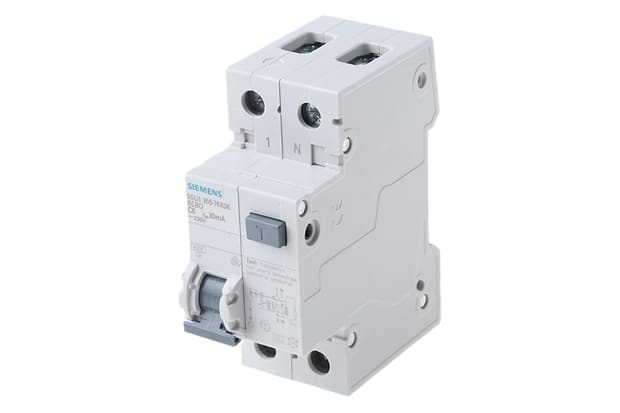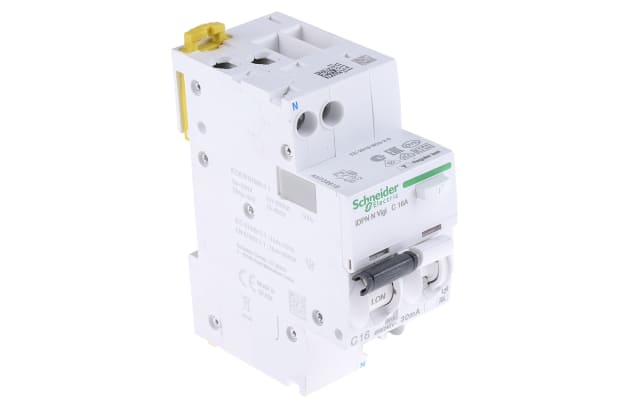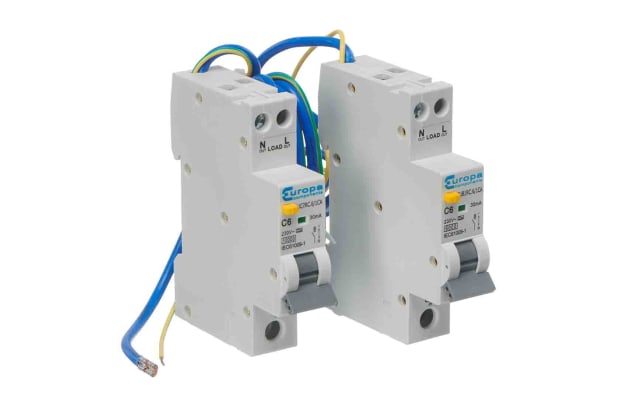- Published 17 Jan 2023
- Last Modified 29 Aug 2023
- 10 min
A Complete Guide to RCBOs
There are many things to consider when choosing the right RCBO. Find out more in our comprehensive RCBOs guide.

What are RCBOs?
The residual current device (RCD) or residual current circuit breaker (RCCB) enables the rapid disconnection of electricity, thereby avoiding prolonged and potentially serious shocks. An RCD device complete with overcurrent protection is called an RCBO, or residual current circuit breaker with overcurrent protection.
The primary functions of RCBOs are to ensure protection against earth fault currents, overload, and short circuit currents. It is recommended that an RCBO be attached to each separate circuit, meaning that a fault in one circuit will not affect the functioning of the others. Such devices allow for disconnection of the circuit for the protection of people and equipment in the event that the current becomes unbalanced. They can be operated exclusively of other overcurrent protective devices within the rated short-circuit capacity.
Design and testing requirements for RCBOs are outlined in the set of standards: IEC/EN 61009: Residual current circuit-breakers with integral overload protection for household and similar uses (RCBO).
Residual Current Circuit Breakers
As previously mentioned, the residual current circuit breaker is designed for rapid disconnection of the electricity supply, thereby avoiding any serious and sustained electric shocks. However, there will still be a risk of injury should the person fall over after the initial shock or touch both conductors simultaneously.
The breakers enable the rapid and automatic disconnection of a circuit upon detection of an unbalanced electric current between the circuit supply and return conductors. There will be a shock hazard whenever there is a difference between the currents within the conductors indicating a leakage current.
The RCD device is an essential component within the automatic disconnection of supply (ADS), allowing for the automatic disconnection of the electric supply, rather than being reliant on human intervention. Such devices should operate within 25-40 milliseconds of the detection of leakage currents (through a person) in excess of 30mA. However, it is also important to note that this is only true for final circuits less than 32Amps.
What is the Meaning of RCBO?
The RCBO meaning is residual current circuit breaker with overcurrent protection. These devices are designed to ensure the safe operation of electrical circuits, triggering disconnection whenever an imbalance is detected. They are primarily used for the purpose of combined protection against overloading and short-circuiting against earth leakage currents.
How Does an RCBO Work?
As previously mentioned, the RCBO ensures protection against two types of electrical fault. The first of these faults is the residual current or earth leakage. This will happen when there is an accidental break in the circuit, which may occur as a result of wiring errors or DIY accidents (such as cutting through a cable when using an electric hedge cutter). If the supply of electricity isn’t broken, then the individual will experience a potentially fatal electric shock.
The other type of electrical fault is the overcurrent, which may take the form of an overload or short circuit. In the first instance, the circuit will be overloaded with too many electrical devices, resulting in the transfer of power exceeding the cable capacity. Short-circuiting may also happen as a result of insufficient circuit resistance and high-level multiplication of the amperage. This is associated with a greater level of risk than overloading.
Have a look at the RCBO varieties available from different brands below:
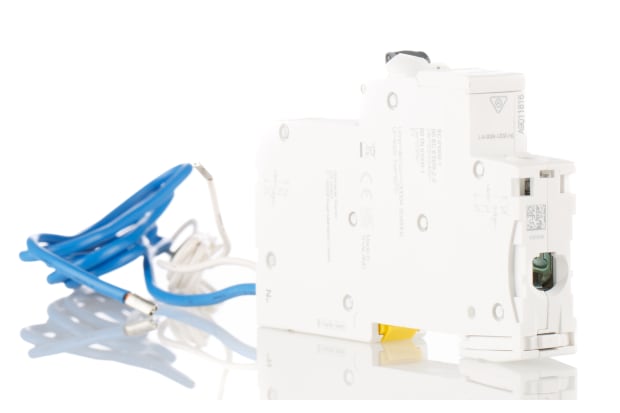
Schneider Electric
Functions :
- Protection against short-circuits and cable overloads
- Protection of persons against electric shock by direct contact (10, 30 mA sensitivities)
- Protection of persons against electric shock by indirect contact (100 mA sensitivity)
- Protection of equipment against fires set by leakage currents (100 mA sensitivity)
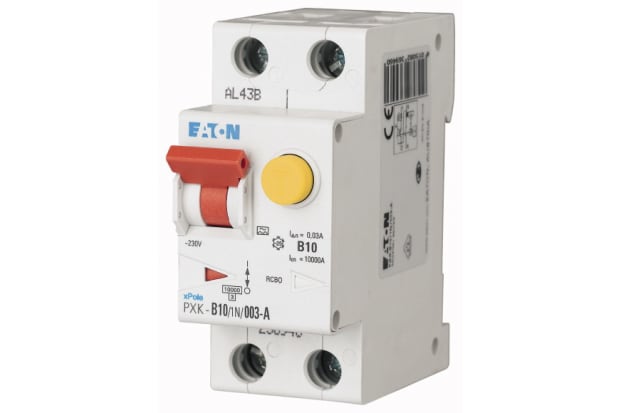
Eaton
Functions :
- Safe, reliable and high-performance protection on electrical power distribution systems
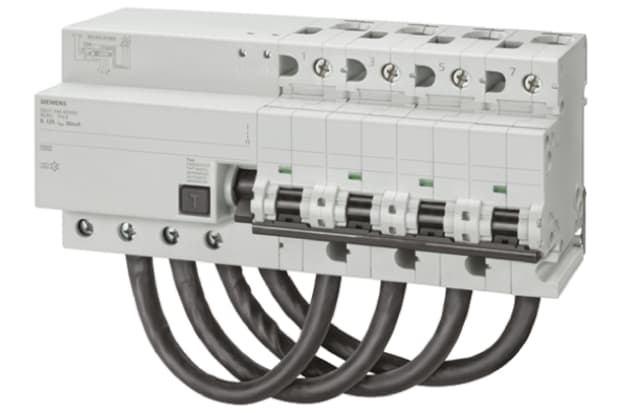
Siemens
Functions :
- Clear and visible conductor connection in front of the rear bus bar facilitates controls
- Large and easily accessible wiring space enables easy insertion of conductor in the terminals
- The surge current withstand capability of over 1 kA ensures safe and reliable operation
RCDs vs RCBOs
RCDs are designed for protection from electrocution or electrical fires. They do this by automatically cutting off the supply of electricity whenever an electric current leakage is sensed. The RCDs allow for continuous monitoring of the current level passing through a wire in one single direction, and again in the reverse direction. The circuit will be automatically broken in the event that there is a difference of 300mA or less in some instances. This provides the assurance of protection against electrical shocks.
You should be aware that RCDs will not react to overloads or short circuits. They will have a standard rating that may be anywhere from 32A to 64A. However, this rating corresponds with the internal contact and switching mechanism. The device will not trip out when the standard rating is exceeded. You will also see an indication of the imbalance that will need to occur for the device to trip.
All RCDs come complete with a test button, allowing for the simulation of an event involving disparity in the electricity supply. If the device doesn’t trip during such a simulation, then it will have to be replaced.
There are some key differences between RCDs and RCBOs. The RCBOs are integrated with an electronic switch and designed for the transfer and breakage of currents under normal service conditions for the opening of contacts when the residual current is of a certain level under defined conditions. These devices are also designed for protection against overloading and short-circuiting.
The RCBO will break the circuit if the current demand exceeds a particular level. An overload may be sensed in the event of a short circuit, or excessive demand due to the connection of multiple devices. This will automatically cause the circuit to break. There would be a considerable risk of the wires melting and catching fire if the circuit wasn’t broken. The RCBO thereby provides protection for people, equipment, and property.
What is an RCD?
As previously mentioned, RCD stands for residual current device. The functionality of such a device may be considered in relation to a basic electrical circuit. Electricity flowing through the live cable will be transferred to the powered device. The flow will then continue through the neutral cable for completion of the circuit. If some of the electricity was diverted through the earth cable, then the user would experience an electric shock.
The RCD effectively monitors the flow of electricity through the live and neutral wires, ensuring that the levels are the same. If this isn’t the case, then the electricity supply will be cut, so avoiding the shock. This device offers higher levels of personal protection than either the ordinary fuse or circuit breaker.
You may choose from these RCD varieties:
- Fixed RCDs – these are fitted within the consumer unit (fusebox) and offer protection for individual and circuit groups
- Socket-outlet RCDs – these special socket outlets have an integrated RCD, which replaces the standard socket outlet. They provide exclusive protection for the user of the equipment
- Portable RCDs – these RCDs can be fitted to any standard socket-outlet. An appliance can then be attached to the RCD. They are ideally suited to fixtures where there is no fixed or socket-outlet RCD available. These RCDs also provide exclusive protection for the equipment user
RCBOs vs RCCBs
The RCCB has very similar functionality to the RCBO. However, it doesn’t provide integral overcurrent protection and so doesn’t safeguard against overloading or short-circuiting. Rather, the RCCB provides exclusive earth leakage protection and requires the fitting of an external CB for the assurance of overload and short circuit protection.
RCBO vs MCB
The MCB, or miniature circuit breaker, is an electrical switch integrated for the automatic protection of the electrical circuit from damage as a result of the overcurrent. It automatically stops the flow of electricity through the circuit upon detection of a fault. These circuit breakers can be switched on or off for circuit isolation and they are relatively safe to use with the conductor contained within plastic casing. The main difference between an RSBO and MSB is that the MSB doesn’t provide protection against earth leakage.
Replacing an MCB with an RCBO
Notification will not be required in accordance with building control or part P registration provided that the cable sizes are appropriate given the breaker’s rating. However, the replacement must be carried out by a qualified electrician following the manufacturer’s instructions and guidelines set out in the BS7671 standard. It will be necessary to check the levels of resistance and test the insulation. The RCBO insulation should also operate within the corresponding specifications.
An RCBO can be installed as follows:
- Isolate the electrical supply from the consumer unit
- Turn the two fasteners 90 degrees for detachment of the front cover
- Carefully loosen the bottom terminal of the device
- Open the bottom device clip
- Position the device onto the din rail and busbar
- Close the bottom device clip
- Firmly secure the device to the busbar and tighten the lower terminal screw
- Check the tightness of the cable connections
How to Wire RCBOs
You should ensure that the power supply is disconnected before you proceed with the wiring of an RCBO. A PE cable should then be attached to the earth bar, with the power cables being connected to the top of the isolator. The phase cable should be positioned to the left of the terminal, with the neutral cable to the right. You should then cut the busbar to the appropriate length before connection to the bottom of the isolator and RCBO.
A neutral cable should be connected from the bottom of the isolator to the earth bar. The outbound cables will be the twin core and earth. Earth sleeving should be used to cover the earth wires before connection to the earth bar. It will then be necessary to attach the brown live wire to the terminal ‘L’ out. The neutral blue wire should be connected to the terminal ‘N’ out. Wiring must be cut to the appropriate length, with the earth lead being connected to the corresponding bar. This process should continue with the attachment of the neutral supply lead to the appropriate bar.
How to Fit RCBOs
Before proceeding with the installation, you should ensure that the RCBO offers at least 10mA protection, has a 25A current rating, is SRIM certified, and provides A-type protection. You will also require ready access to both live and neutral wiring. An appropriate screwdriver will be required for the secure attachment of the RCBO. You will also have to use a test pen to ensure the power is switched off upon disconnection from the mains supply.
You will have to ensure the appropriate connection of the wiring in order to ensure that the RCBO works properly. The cabling should be attached to the corresponding terminal and then tightened with a screwdriver. The next step will be to connect the earth wire from the RCBO to the bar, again tightening with the screwdriver. You may then proceed to switch on the power of the RCBO and the connected equipment. You can check on the installation by flicking the RCBO test button and ensuring that the connection trips. The terminal may have to be reconnected in some instances.
Popular Brands
ABB
With a comprehensive range of products to choose from, RCBOs from ABB are a popular choice.
Schneider Electric
Schneider Electric has a wide range of different RCBOs on offer, with the full range available from RS.
Europa
Browse RCBOs from leading brand Europa and discover the most suitable product for your requirements.

